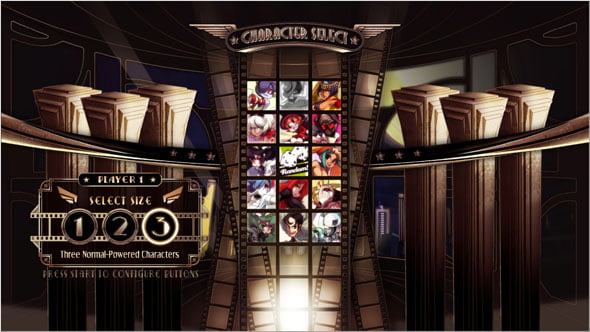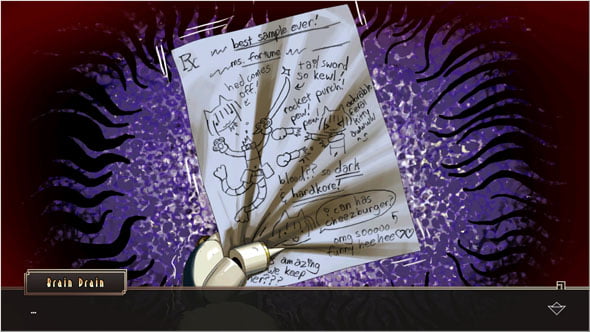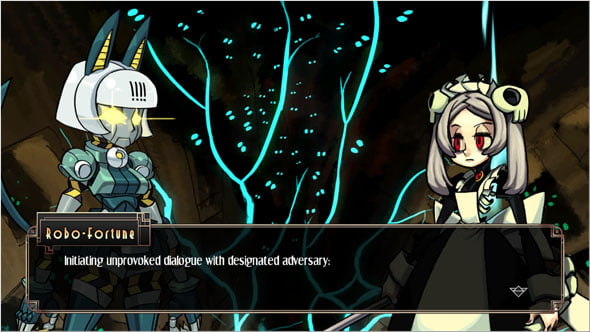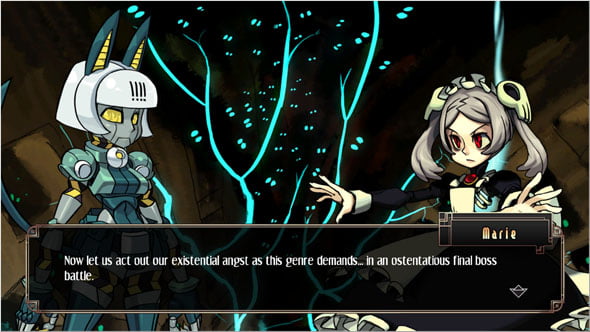Have you ever had an experience with a game, where it turned out to be much more than it first appeared?
A game so unexpectedly good and extraordinarily well-made that it made you wonder why you didn’t play it sooner or at least have it on your radar. Has this ever led to a reverse cognitive dissonance, making you wonder that the game is worth much more, than you paid for it?
As a lover of video games, there is something enticing about a video game sale. Maybe that’s a bit of an exaggeration but you get what I mean. It comes from a happy place and is usually accompanied by a promise of joy, playfulness and potential bliss. These feelings are tuned-up a notch should you happen to net a game you kind of had your eyes on, at a discount.
Usually these discounts are reasonable, hovering around 25% , 33% or even 50% off the base price. But sometimes – given the number of games available and the upshot of digital economics – these discounts are ridiculously low, even as much as 90% . As a result, some well-developed games with exceptional production values are under sold, so much so that their worth in terms of gaming merit diminishes just because they were available at a price that is economically – and sometimes even morally – inconceivable.
Skullgirls was first released in April of 2012. It was developed by Reverge Games under the lead of designer Mike Zaimont and initially co-published by Autumn Games and Konami. This was followed by major developmental challenges, including Konami requesting the game’s removal from PSN & Xbox Live, Reverge closing down, and financial support being cut.
But Skullgirls survived.
Reverge staff reunited as Lab Zero Games and launched a successful Indiegogo campaign for future DLC, the last of which landed in 2015 on PC. It also found a new co-publisher in Marvelous AQL and finally, after what seems like a whirlwind of uncertainty, it has made its way on to PlayStation 4 – with a little help from Sony – in the form of Skullgirls 2nd Encore.
I picked up Skullgirls Encore on the PC in early June 2015 for $2.99, plus two DLC characters (Squigly & Eliza) for $0.99 each – the whole package setting me back a meagre $4.97 (And in times like these where fighting games are the worst at doing post-release DLC characters, Skullgirls offered two free DLC characters, Beowulf and Robo-Fortune, both well into 2015). The amount of content blows my mind. It could very well be a retail Capcom brawler, only with more options to play, more variety in game modes and much, much more heart.

The game offers matches of any combination of up to 3 characters per team. This means you could be fighting classic Street Fighter 1v1 matches, the much more chaotic Marvel vs Capcom 3v3 matches, or any conceivable combination in between. The fighting system is an amalgam of many modern mechanics that the big guns of fighting game genre (Capcom, Namco, NRS) have created. Mechanics such as supers, cancels, assists, delayed hyper combos, and launchers. Skullgirls doesn’t shamelessly copy these mechanics but rather tweaks these systems. For example, you can customise assist attacks in the character selection screen and choose from any of the moves such as specials, overheads, normals.

A game of such magnificent scope sounds daunting and it this was very much he case back in 2012 when it was released. The game launched without a tutorial and – digest this – was missing the command lists for the original eight playable characters. But, over time, it has not only received the command list but a massive beginner-friendly tutorial that not only teaches the basics of Skullgirls but also acclimates new-comers to the tips, tricks and jargon of fighting games in general. It offers guides on how to start, extend and end combos. Details of how to plan ahead of ending a combo, how to escape high-low mix ups, vortexes and many other things that are usually observed at tournament level play.
Also, unlike Street Fighter 4 & Mortal Kombat X, combo timing in Skullgirls is not very taxing and even beginners can chain combos and pull-off magnanimous feats.
Though I have clocked-in over 32 hours into the game, I still cannot confidently rock a three character team and have only recently braved to spar with my two-woman tag-team. Such is the flexibility of Skullgirls’ gameplay that it strikes an uncommon balance of being ‘accessible’ by allowing you to create your own match configuration, whilst also teasing complexity with the many different configurations possible.

One can find all the staple fighting game modes in Skullgirls – versus, story, arcade, training, online ranked and player matches – but all of them have been decorated with detail that makes it a game more feature-packed than most indie games and many from the AAA space. The art-deco inspired aesthetic of the interface sets a strong first impression and it only builds from there. The standout aspect that laces the entirety of Skullgirls is the excellently well-established characters and their remarkable design.
Each character is creatively crafted and the designers & developers have pulled out all the stops in going full-on bonkers with their bearings and behaviours. For instance, there’s a circus performer called Cerebella with two giant muscular arms for a hat. There’s Fillia, a school girl whose hair is possessed by a demon called Samson, and then there’s Ms Fortune, an undead feline with a detachable head that poses as a projectile and as an ‘in-ring assist’. The strangest of all the characters however is Double, a grotesque shape-shifting creature with a move set that is derived from individual moves from the rest of the roster. In action she shape-shifts into the character whose move she is performing, so her combos look like the entire cast of the game is animating into one another. It’s a weirdly cinematic dance of pain.

The battle animations are where the game is at its best. Fight moves are exceptionally well thought-through and beautifully extravagant. For instance, Valentine the ninja/nurse uses calipers, needles, scalpel , EKG, counter-venom, in short the usual medical equipment that you might expect. But then there’s the really crazy stuff like her jumping heavy punch being a cadaver pushed out of a body bag, and one of her supers involves using a defibrillator to revive a fallen teammate. That, right there, is how innovative design decisions impact the gameplay in daring ways.
For players craving a story mode, the premise of the game is pretty vague and revolves around an artefact called the Skull Heart. The opening cinematic sets the stage in mysterious fashion:
“Legend tells of an ancient artefact that can grant a woman’s wish…
The Skull Heart.
However, if she is impure of heart, she will be turned into an immensely over-powered, twisted being of destruction. A Skull Girl.
A new Skull Girl has risen.
Who will defeat her and claim the Skull Heart?”
With that motivation in sight, each character’s story begins with a little personalized scheme and eventually converges for the Skull Heart in the end. The diverse ways in which each story unfolds is imaginative. The battles are punctuated by hand-drawn stills featuring a large supporting cast.

Despite being so singular and self-assured, the game doesn’t always take itself seriously. I especially love the opening taunts and battle ender pop-offs. For instance, Robo-Fortune (a robot feline with emotions) opens matches by saying stuff like, “I fight for my friends. ERROR: I have no friends,” and when in a mirror match she utters: “This one is purr-sonal”.
The game is super self-aware too because one of Robo-Fortune’s other quotes is “If these puns don’t kill you, I will”.


I could go on about the hundreds of unlock able gallery extras, the tributes and references. But truth be told, these eccentricities are in such abundance and so well done they are the very DNA of the game.
Such eccentricity has been there throughout Skullgirls’ development. One example being when Lab Zero Games released Fukua as joke character for April Fools of 2014. Fukua, a clone for an existing character Fillia, was supposed to be a temporary inclusion but the character was kept in the game following positive fan response. That’s how devoted the fandom is for Skullgirls. There are tons of such fresh takes that you don’t usually see in video games. Like the actual in-game fan cheer of ‘Get Hype’ being recorded during a session of Salty! using voices of actual Skullgirls fans.

I still have yet to mention how visionary the game’s online play is – with its GGPO integration for lag-less online matches. The game goes so far as to display the match ping so that the players can regulate the input lag per frames for much smoother matches.
Retuning to the point of ‘a game feeling worth more than you paid for it’, all that I have mentioned about Skullgirls still doesn’t justify its importance.
Its important for being such a heart-felt game. Today’s video game market is marked with polarity of indies and AAA. Skullgirls is something between that polarity, it is too admiring and reverent of fan feedback to be anything AAA and it is too brave and multifaceted to be among the indie crowd. Skullgirls is special and worth much more than the £19.99 asking price, even on the PlayStation 4.







